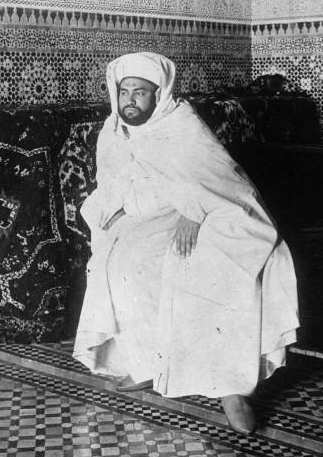
Moulay Yusuf ben Hassan (Arabic: مولاي يوسف بن الحسن) was born in 1882 in Meknes and died in 1927 in Fes. He was the Sultan of the 'Alawi dynasty of Morocco from 1912 to 1927. He inherited the throne from his father, Hassan I, who was the son of Sultan Muhammad IV of Morocco. Moulay Yusuf's reign was a turbulent period, with frequent uprisings against Spain and France. There were also two major uprisings: the Rif War, led by Abd el-Krim in the Spanish colony in the north, during which el-Krim established the Rif Republic; and the Hasani-Sanhaja Saharan uprising in the southern French colony, led by Ma al-'Aynayn's son Ahmed al-Hiba. The Rif War eventually reached French colonial territory, leading to the creation of a Franco-Spanish military coalition that finally defeated the rebels in 1925. For his own safety, Yusef moved the court from Fes to Rabat, which has remained the country's capital ever since. Yusef's reign came to an abrupt end when he died suddenly of uremia in 1927. He was succeeded by his son Mohammed V. He was buried in the royal cemetery of the Moulay Abdallah Mosque.
Sultan Mulay Yusuf ruled Morocco from 1912 to 1927. His coinage followed the traditional Mohammedan style, which included Arabic inscriptions and Islamic iconography. The sultan came to power during the French and Spanish protectorates that ruled Morocco and had limited independence in the field of coinage. During this period, the Moroccan Mint issued various coins and banknotes. The coins and banknotes depicted the sultan's portrait as well as Mohammedan and Moroccan cultural motifs. Such financial instruments reflected the given political and social environment and hinted at foreign influence, as Morocco was partially under foreign control during this period.
Numismatics. Online store for old money, coins and banknotes.